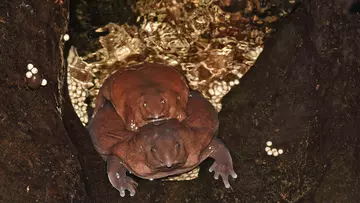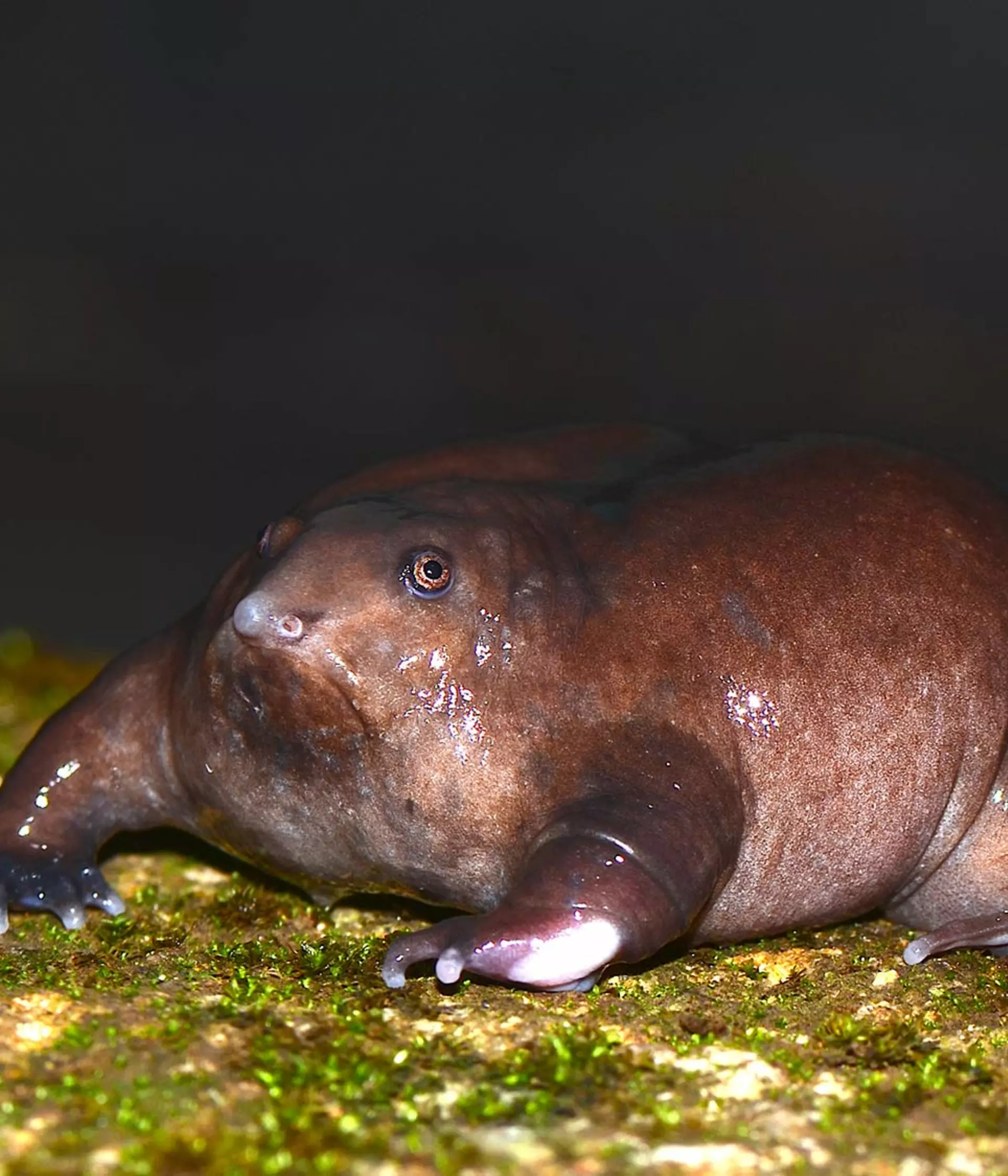
ZSL
Zoological Society of London
Purple frog facts
The discovery of Nasikabatrachus sahyadrensis (also called as the Indian Purple frog or the pignose frog) in 2003 sent ripples of excitement through the scientific community. This unique amphibian is found exclusively in one of the hottest of hotspots, the southern Western Ghats of India.
The Purplish frog resembles a turtle without a shell according to the indigenous people living in Idukki town, from where it was scientifically described. Apart from its very bizarre appearance, which would invariably elicit responses varying from excitement, awe to disgust or fear, the frog is sui generis in many of its attributes. This ancient lineage has evolved independently for about 120 million years, having witnessed and survived through events like the genesis of new continents, a mass extinction, wipe out of the great dinosaurs, evolution of mammals, the ice ages and proliferation of humans as the dominant species. Surprisingly, the closest relatives of this species, a group of frogs called as the Sooglossids, is found in the Seychelles islands in Indian Ocean. For scientists, this serves as an important piece of biological evidence supporting the existence of the supercontinent Gondwanaland.
Two new frog species discovered

The natural history of the species is also very unique and specialised. It is a fossorial species, living under the ground throughout its life and emerging out onto the ground for a very short duration (ranging from few hours to few days) once every year for breeding. And although the frog looks very docile, their breeding behaviour and subsequent development highlights how mother nature has rewarded them with much astuteness when it comes to propagating their own kind.
Mountain chicken frog conservation
Purple frog breeding
The breeding activity of the species is highly synchronised with rainfall, with eggs being laid during pre-monsoon showers when water levels are very low. The eggs are concealed in crevices, holes or underside of rocks found in the stream bed making it very difficult to spot. After hatching, the tadpoles develop (for about 100 days) while clinging onto the stream bedrocks using their highly specialised mouths that can withstand extremely high water velocities. The males of the species have unique calls from secretive burrows to attract the females which resemble that of a ‘chicken’.
India biodiversity
Despite having a population of over 1.3 billion people, India still supports a rich biological diversity.
The country is well known for its charismatic megafauna. However, its diverse and unique amphibian fauna receives relatively little attention on the global conservation stage despite several amphibian species endemic to India being recognised as global priorities for amphibian conservation on account of their unique evolutionary history and threatened status.
The true diversity of amphibians in India is yet to be clarified; rates of amphibian species discovery in the country are amongst the highest in the world with 185 species described since 2004. To date, the majority of amphibian studies in India have been focused on taxonomy, systematics and evolutionary biogeography, with little focus on population status, ecology and conservation. But this is now gradually changing, we support early stage conservation biologists who are working on some of the world’s most unique amphibians in the Western Ghats, a region that is incredibly rich in weird and wonderful amphibians.
Our global science led conservation is helping people and wildlife live better together to restore the wonder and diversity of life everywhere. Time is running out, and we now need everyone to become conservationists to protect the living world. Join the fight for wildlife across the globe.
